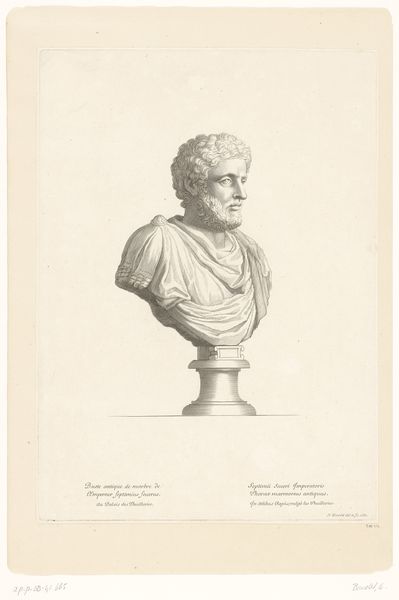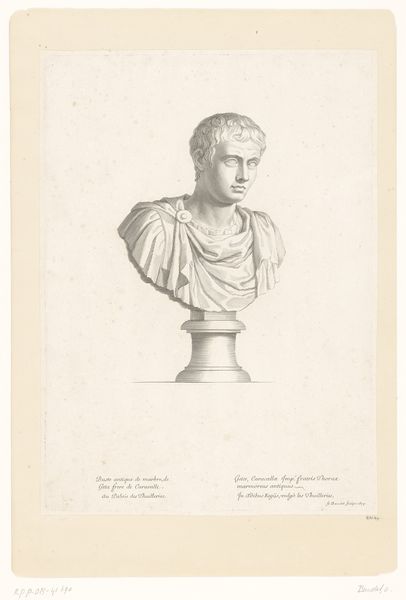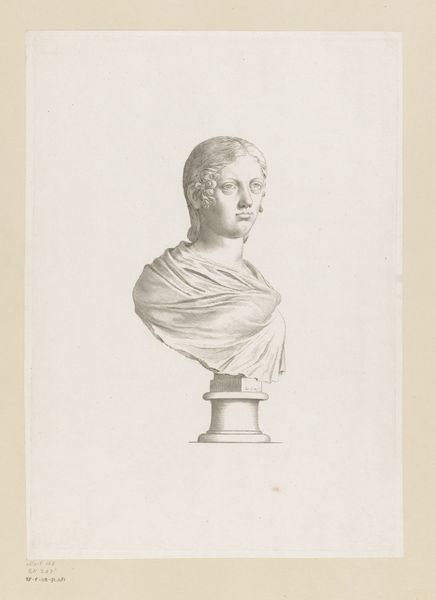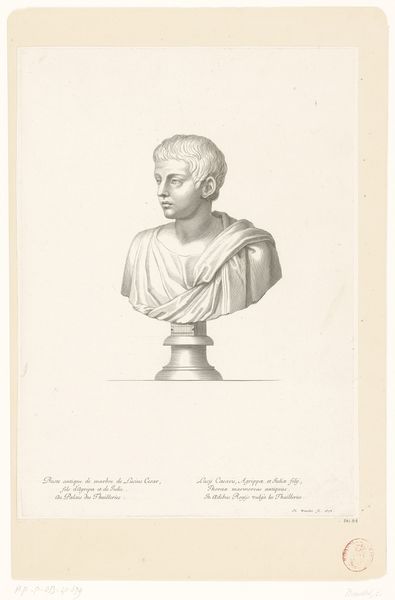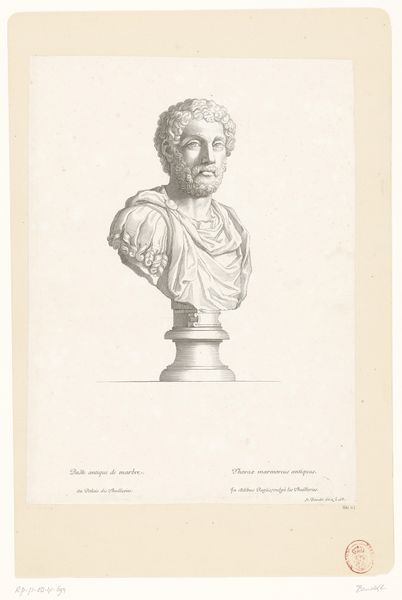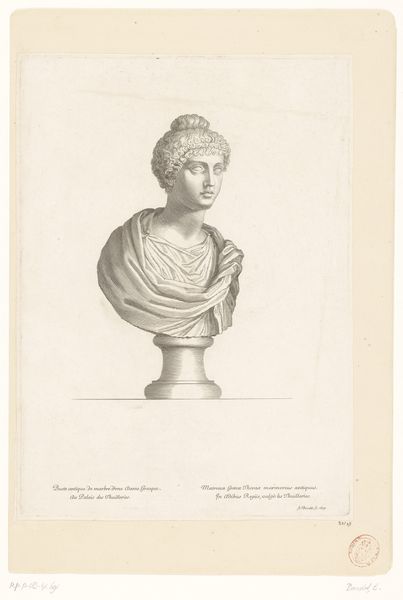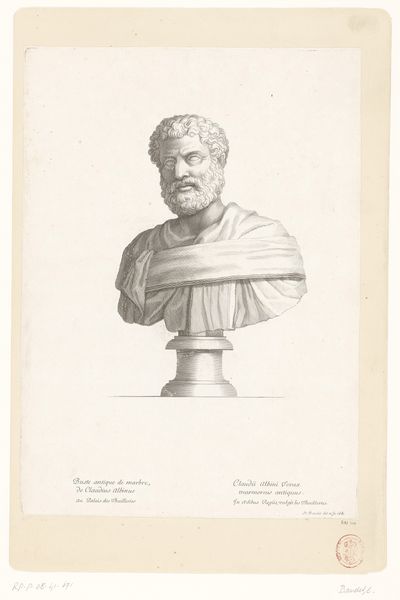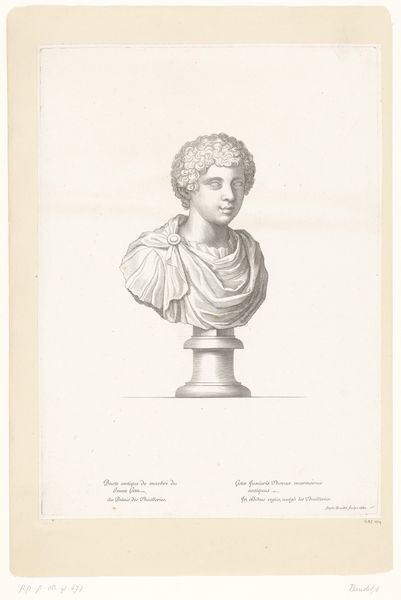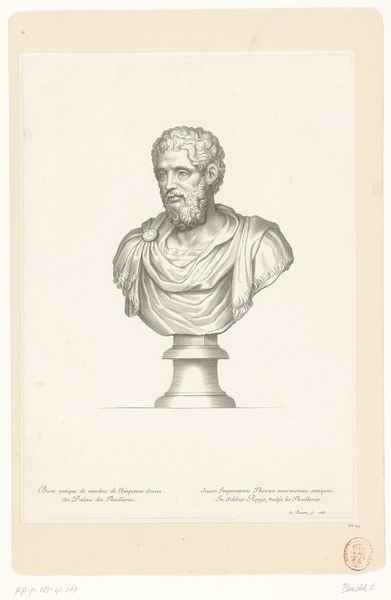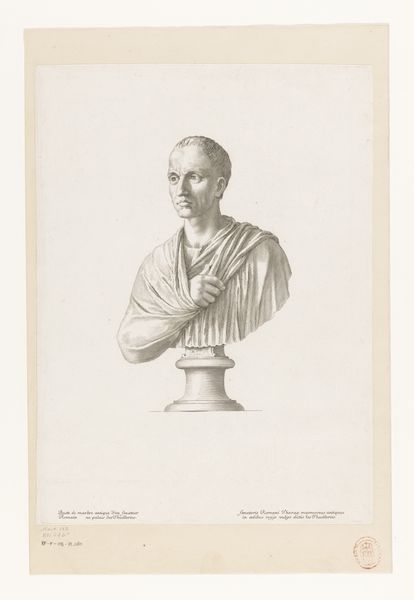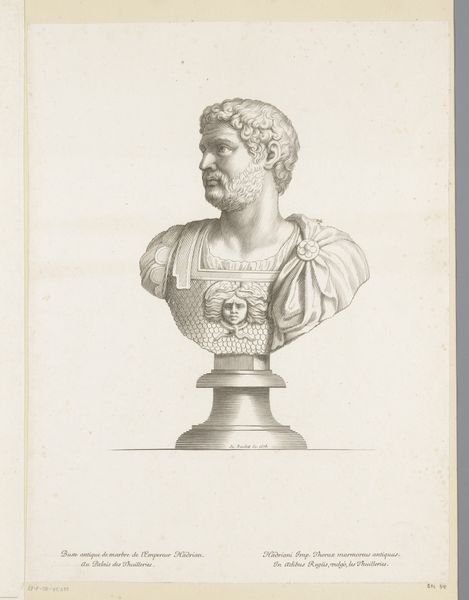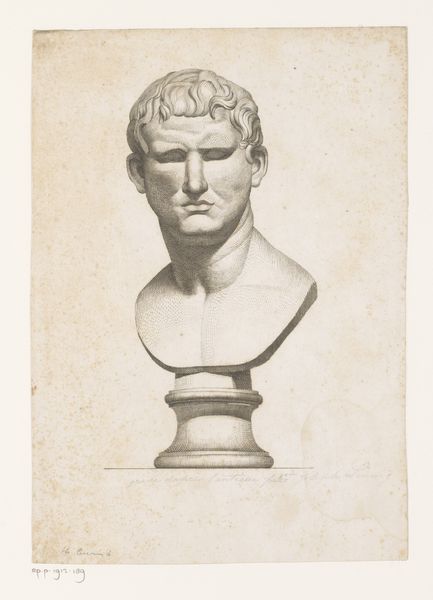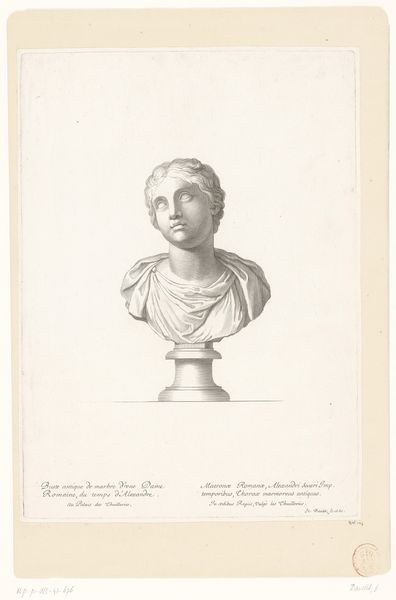
Dimensions: height 394 mm, width 282 mm
Copyright: Rijks Museum: Open Domain
Curator: Here we have an engraving from 1680 by Etienne Baudet, titled "Antique Bust of Trajan." Editor: It’s a study in contrasts—the cold, distant marble implied in the bust, yet softened by the delicate engraving lines. What strikes me is the sheer labor embedded in replicating stone in print form. Curator: Exactly. Baudet, as an academic artist, meticulously renders this bust, adhering to neoclassical ideals. Prints like this played a key role in disseminating classical aesthetics and solidifying Trajan's image as an ideal ruler. Think about the power dynamics involved – turning a marble sculpture into a reproducible image for broader consumption. Editor: It's fascinating how the medium transforms the message. The coolness, the supposed permanence of marble, is undone. Engraving requires precision, control, and it abstracts the materiality into lines, making the Emperor more ethereal, perhaps even...manufacturable? The labor of the engraver mirroring that of the sculptor, centuries apart. Curator: That's astute. Baudet wasn't just copying; he was interpreting, placing Trajan firmly within the artistic and political discourse of 17th-century Europe. This engraving almost sanitizes Trajan, turning him into a symbol of timeless authority—serving particular ideological functions in its own time. Editor: And think about the role these engravings played in constructing art historical narratives! Before photography, printed images were primary conduits of visual culture, shaping perception of sculpture and influencing artists, artisans, and even the material culture of everyday life. How many ceramic figurines were made in his image, I wonder? Curator: That's a great question and I'd say that Baudet's work speaks to the complex interplay between art, power, and the mechanics of image production during his era. Editor: It’s a potent reminder that even depictions of enduring power are tied to the material circumstances of their making. I leave more conscious of both stone and paper.
Comments
No comments
Be the first to comment and join the conversation on the ultimate creative platform.
